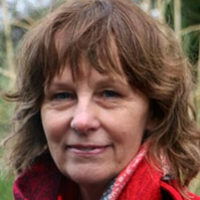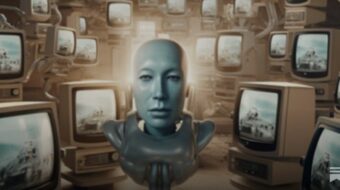
The great Italian painter and architect, Raphael, died 500 years ago, on April 6, 1520. He lived at the time of the High Renaissance, one of the most progressive periods of history. As Engels put it: “It was the greatest progressive revolution that mankind has so far experienced, a time which called for giants and produced giants—giants in power of thought, passion, and character, in universality and learning.”
The High Renaissance
Raphael was one of the three greatest masters of the High Renaissance, the brief period between 1500 and 1530, the heyday of early capitalist art in Italy. First beginnings of capitalist production arose in the 14th and 15th centuries in Florence and Genoa. Artisanship and banking flourished in the cities of northern and central Italy until the 15th century. Wealth and luxury expanded, and the power-seeking ruling classes gave the arts great representative and decorative tasks in pursuit of their own importance.
The High Renaissance witnessed a highpoint for the visual arts. Even in the turmoil of the Italian wars from 1494 to 1559, when French and Spanish troops ravaged the country and the economy, the arts did not lose their importance. Florence had developed into a cultural metropolis under the rule of the Medici from 1450 to 1494. In the first decade of the 16th century, Rome took over this role. By the time Renaissance art reached its peak, Italy’s economic decline had begun, the Italian states were facing economic and political difficulties, and the Italian bourgeoisie withdrew into banking and usury, investing their capital in land. This ultimately led to a revival of feudal conditions in Italy. The successors to the powerful early capitalist dynasty and patrons of the arts, the Medici, made themselves dukes of Tuscany, as absolutism replaced republican control.

However, the progressive thinkers and artists of the 16th century all remained committed to the defense of the people and even democratized the philosophy of humanism, which had originally been limited to a small group of intellectuals. Their works appeared in the vernacular and emphasized national and democratic ideals. This made the Italian High Renaissance a significant and unparalleled event.
Raphael
Raphael was born in Urbino in 1483. At the age of 17, he joined the Perugino workshop. Here he learned to give expression to psychological delicacy, which arises with the Renaissance discovery of human beings as this-worldly individuals.
From 1504 to 1508, Raphael worked in Florence. When Raphael arrived in Florence he was only 21 years of age and yet he was quickly regarded as one of the giants of the High Renaissance. Michelangelo was 29 at the time and Leonardo was 52.
As Raphael’s fame spread, Pope Julius II called him to Rome. Michelangelo was painting the ceiling of the Sistine Chapel at the time. Leonardo da Vinci was at the height of his creativity. Leonardo and Michelangelo had studied the anatomy of the human body and its movements. They created their compositions from the action and interaction of living bodies and moving faces.
So Raphael went to Rome at the behest of Julius II, nicknamed the Warrior Pope or the Fearsome Pope of the Rovere family. During the Renaissance, the popes were not only ecclesiastical leaders but also Princes of Roman territories. Julius participated personally in wars and famously stated he preferred the smell of gunpowder to that of incense. Furthermore, he sought to construct magnificent buildings with monumental decorations, as witness to his power and that of the Church. In the Vatican, Julius II brought in artists to paint rooms and other spaces. In 1509, he commissioned Raphael to decorate some rooms with monumental frescoes on the ceilings and walls. The most famous of these is the Stanza della Segnatura (Signature Room).
The School of Athens
Set in a great architectural illusion, the “School of Athens” portrays an entirely male ancient world. Curiously—seeing this is the Vatican—modern, Christian thinkers do not appear. Although many of the figures lived at different times, they are shown together as part of the Athens School. The two main figures in the work, centered under the archway, in the fresco’s vanishing point, represent two schools: Plato, to whom Raphael gives Leonardo’s features, pointing upward into the realm of ideas, his student Aristotle gesturing to earthly, physical experience. Each of these philosophers holds his book representing his thinking: Plato holds the Timaeus, Aristotle his Ethics, both in modern binding of Raphael’s time. Their clothes support their stances: Plato is dressed in the colors of air and fire, Aristotle in those of earth and water.
The painting divides into two halves along these lines. Philosophers, poets, and thinkers on Plato’s side, while physicists, scientists, and more empirical thinkers gather on Aristotle’s side. On the left, along with Plato, you can see the Greek philosopher Socrates with his distinctive nose talking to Athenians. Socrates famously expounded his philosophical thinking in conversation with people. He was Plato’s teacher. Alexander the Great, king of Macedonia and pupil of Aristotle, is shown listening attentively to Socrates, who is emphasizing arguments on his fingers. In the foreground, Pythagoras, who predates Socrates, sits with a book and an inkwell, surrounded by students. Epicurus, on the other hand, lived after the other philosophers: He is the chubby fellow with a crown of vine leaves. He taught that happiness lies in the pursuit of pleasures arising from freedom from fear and absence of pain.
Diogenes the cynic, who lived from charity, lies happily on the steps with his drinking bowl, his body pointing to the Aristotle side of the painting. On the right in front, appears Euclid, explaining the laws of geometry with a compass. He is demonstrating measurability of actual things: Concrete theorems with exact answers demonstrate why he represents Aristotle’s side. His face is modeled on the great architect Bramante, a friend of Raphael’s. Bramante’s design of St. Peter’s was based on a geometrical pattern of circles and squares. Raphael was entrusted with the completion of this building after Bramante’s death in 1514, the largest ecclesiastical construction project in the West. Interestingly, the pope permitted German Dominicans to sell indulgences to pay for it, which ultimately helped spark the Protestant Reformation in 1517.
The classical statues on either side of the picture also reinforce the two philosophies. On Plato’s side, we have Apollo, the god of the sun, poetry, and music. Athena on Aristotle’s side is the goddess of wisdom, medicine, commerce, handicrafts, the arts in general, and later, war—all perhaps more earthly concerns.
The foreground is less peopled than the rest of the painting, making way for the two philosophers. Two figures are, however, placed here in isolation, while the others engage with groups of people. They are Diogenes and Heraclitus, the latter being the first great European dialectician, wearing the clothes of a stonemason. Interestingly, Raphael appears to have given him Michelangelo’s features.
The great mathematician and astronomer Ptolemy, wearing a yellow robe, holds a terrestrial globe in his hand, facing the Persian Zoroaster showing a celestial sphere. Interestingly, the young man standing amongst these scientists, and the only figure looking directly at the viewer, is Raphael himself. Incorporating this self-portrait into a work of such intellectual history was a confident stance for the artist. Placing himself, and the portraits of some of his contemporary artists in this fresco along with the greatest thinkers in European history elevates the significance of the arts in the High Renaissance.

The Sistine Madonna
Raphael is one of the great discoverers of the feminine in painting. His lifelong preoccupation with the Madonna guided him to this subject, the love between human mother and child. Indeed, one might say that ancient mother cults live on in this theme.
Around 1512-13 he created his three large Marian altars, among them the “Sistine Madonna.” Alongside the frescoes of the Vatican, this Madonna is considered Raphael’s main work.
In this work, Raphael continues his effort to make Mary appear more maternal and human. The model is assumed to be Margherita Luti, the daughter of a Roman baker named Francesco. It’s believed that Margherita was Raphael’s partner for the last twelve years of his life.
Her person expresses a depth that cannot be found in any other of Raphael’s Madonnas. She comes barefoot, carrying her child like a peasant woman. Her left arm, his right arm, and her flowing veil form a protective circle around the child. The child echoes his mother’s apprehensive expression, as he snuggles up to her. It is a profoundly human and this-worldly depiction.
The two angels at the bottom of the painting appear to have escaped from the heavenly hosts in the background but also look exceedingly human. The very original host of ghostly angels’ faces crowding the background add to the forward drive of the Madonna, who seems to be walking right out of the painting.
Raphael died on his birthday, aged just 37 years, on April 6, 1520, after eight days of illness from pneumonia, and was buried the following day in the Pantheon.












Comments